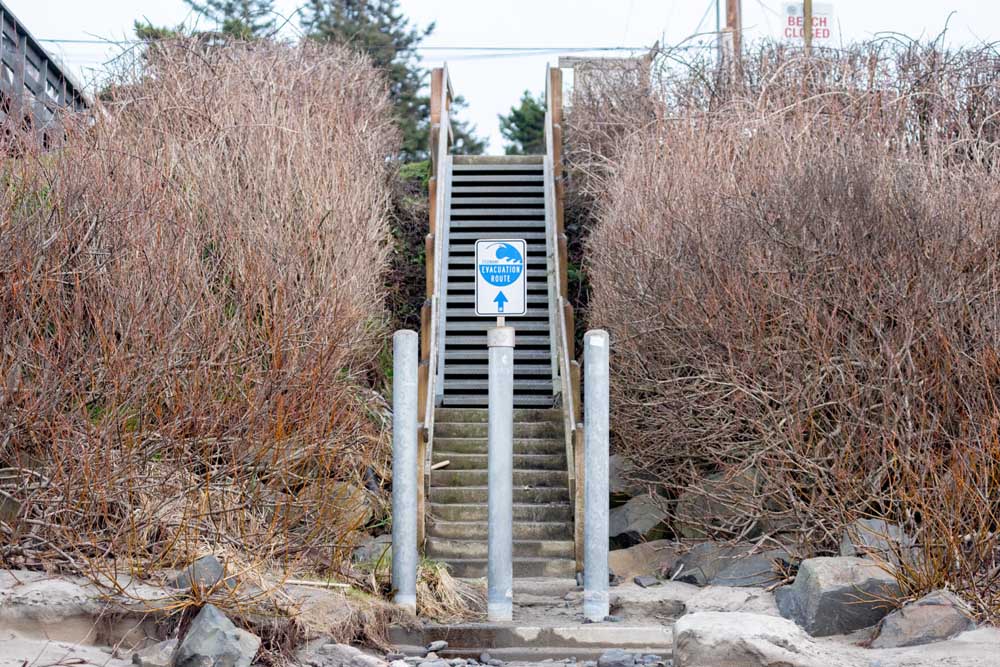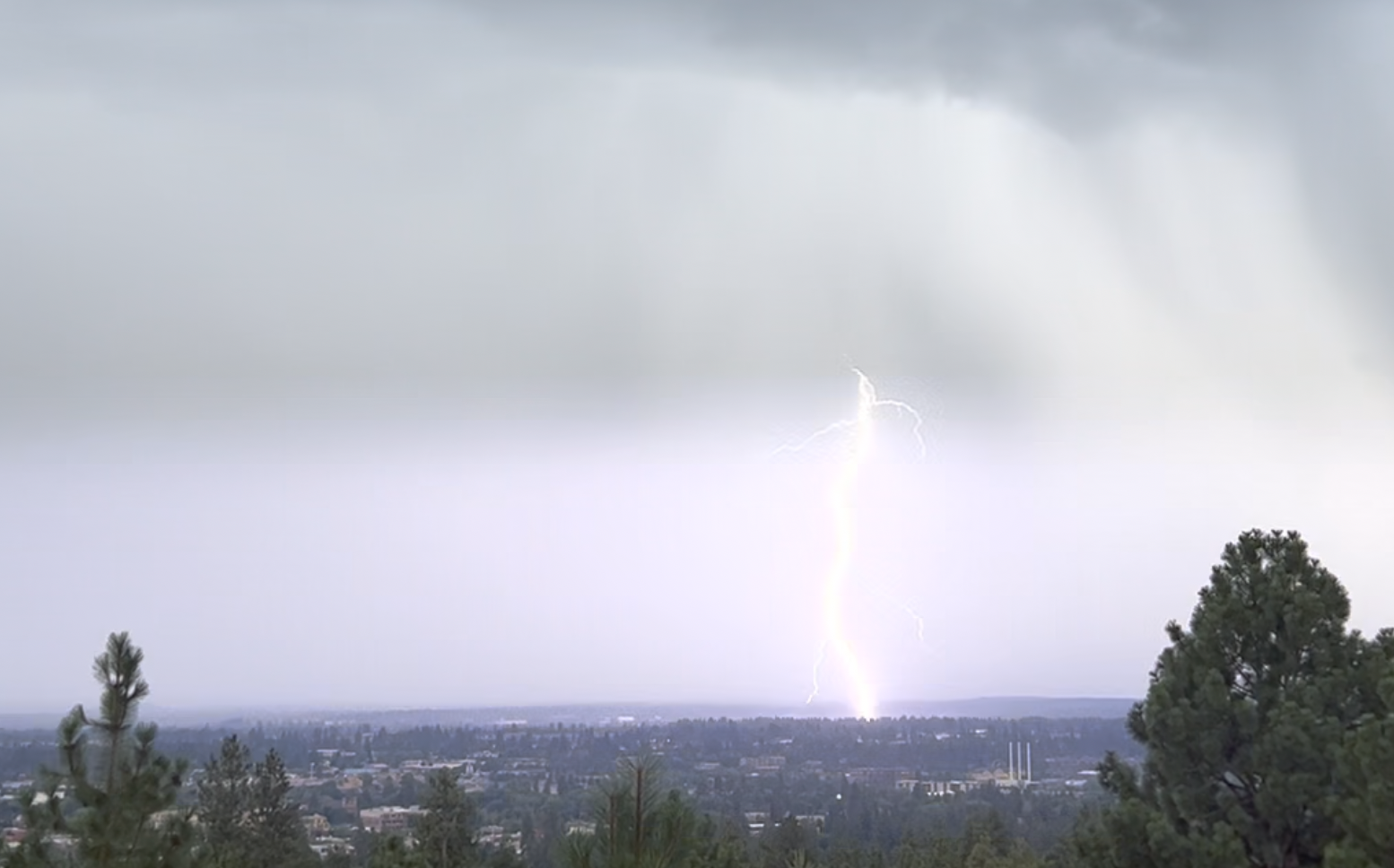Historic downtown Bend church could be razed for affordable housing
Published 5:45 am Wednesday, July 9, 2025
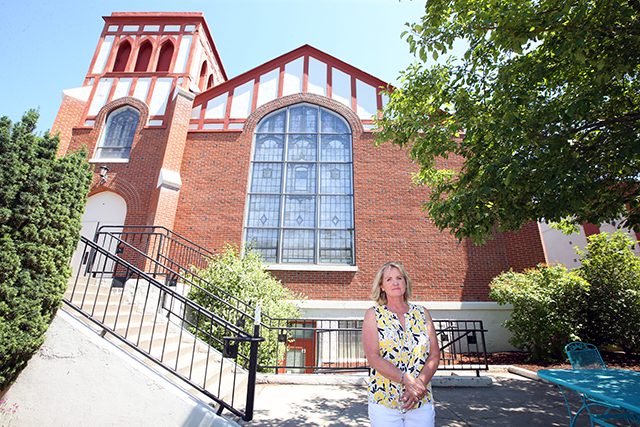
- Jen Stuart, pastor of Bend United Methodist Church, stands in front of the oldest part of the church built in 1922, during a tour of the Bend United Methodist Church in Bend Monday afternoon. 7-7-25 Andy Tullis/The Bulletin
The Bend United Methodist Church has stood in a historic portion of downtown Bend for 100 years. But the future of the property may not be as a house of worship, rather, housing for the working class.
Church leaders are exploring the possibility of developing a 116-unit affordable apartment building on the corner of Bond Street and Kansas Avenue, which would mean tearing down all or part of the old two-story church building there.
The church is seeking funding to study and design the project, but none of the plans are set in stone, said Rev. Jen Stuart, lead pastor with United Methodist, commonly known as Bend Church.
Trending
For a congregation where worshipers and financial contributions are dwindling, redeveloping its choice property would serve multiple purposes: provide financial stability for continued church operations and progress its mission by providing something Bend desperately needs: affordable housing.
“If people aren’t going to come into your church to worship God, for a variety of reasons, there are other ways that we can offer love and support,” Stuart said in an interview. “Right now, that’s housing.”
A prime location
Rents in Bend Church’s housing project would likely be restricted between $800 and $1,200 for a single-person household — several hundreds of dollars below market rate. According to a funding application submitted to the city, all 116 units would be restricted to households earning between 30% and 80% of the area median income, or between $24,000 and $64,000 for a single person, prioritizing seniors, veterans and the local workforce.
Bend will need to build nearly 9,000 units restricted to those income levels in the next 20 years, according to a recent state analysis.
As churches everywhere become increasingly empty, many see affordable housing development on their property as a way forward. Often they can contribute property close to services in downtown areas, but lack the cash to begin development.
Bend Church is working with Home First, a Portland-based development company specializing in affordable units that has developed several church properties in the past 10 years. CEO Ben Pray said Home First is working on piecing together financing for the project, starting by asking the city of Bend for $4 million in affordable housing loan funds. It’s one of 11 affordable housing projects competing for $5.7 million in financing.
Trending
Home First and Bend Church will present their application to a city subcommittee on Wednesday afternoon. Bend Mayor Melanie Kebler declined to comment on the plans because of the active application process.
The development is expected to cost about $63 million, according to the application. Construction could begin in 2027 with leasing starting in 2028.
Pray said he expects most of the funding would likely come through federal and state housing tax credits. The church in April asked the Legislature for a contribution, but didn’t get one. Lawmakers did, however, recognize the role religious organizations could play in solving the housing crisis by passing HB2964, which provides money to churches and other nonprofits for development startup costs.
‘It’s a sacrifice’
Bend Church contains a sanctuary, gymnasium, commercial kitchen, offices and other community spaces. There’s a defunct bell tower above the sanctuary, marked by an old door hovering near the ceiling. Perhaps the most notable feature is the 100-year-old stained glass windows in the sanctuary.
But in a recent newsletter to members, Bend Church shared a grim reality: “Our beloved building, while filled with history, is financially crushing us.”
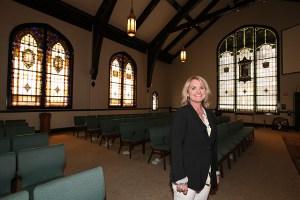
As the sunlight shines through the stain glass windows behind her, Jen Stuart, pastor of Bend United Methodist Church, stands inside the sanctuary at the Bend United Methodist Church in Bend Monday afternoon. 7-7-25 Andy Tullis/The Bulletin
The original building was constructed in 1922, and expanded over the course of the century. When church leaders built the last expansion in the 1990s, they expected the congregation would grow to 750 members.
That never came to fruition. Today the church has 333 members — half of what it was at its peak. About 100 people attend services each week. Financial gifts and money from building leases was no longer enough for the church to continue its work in the community.
Addressing homelessness has become a growing part of the church’s work. It provides food, clothing and other supplies to people in need, and serves as a mailroom for hundreds of people without a home address. The church parking lot hosts two small homeless shelter units — part of the genesis of the city’s safe parking program.
Church leaders say an affordable housing development is an extension of that work. Given the insurmountable financial hole, Stuart said, spearheading the housing project allows the church to carry on its legacy and shape the future of the property, rather than simply selling it and moving to the suburbs.
Leaders hired an ice cream truck and brought together members at a meeting in front of the church to discuss its future last month. Some were concerned about the history of the church and the possibility of demolition.
“It’s a sacrifice. It’s not as though this is a process that is a whole lot of fun,” Stuart said. “There’s a lot of grief along with it — that we aren’t the church we were 60, 50 years ago, 30, 40 years ago.”
One possibility, according to the funding application, is to house church programs on the ground floor with four levels of residential units stacked above.
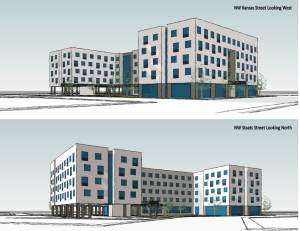
Bend Church and Home First submitted preliminary sketches of the affordable housing apartment to the city of Bend, but pastor Rev. Jen Stuart said the sketches likely do not resemble what the building will actually look like, adding that the church wants to align the project with the historic character of the neighborhood. (City of Bend)
The application comes with preliminary sketches of those concepts, but in reality, those renderings are far from what the building will probably look like, Stuart said. No real architectural work has been done, she said.
What she does know is the church hopes to remain aligned with the historic nature of the neighborhood.
“We are not going to build something big and modern and shiny. That’s not going to happen,” she said.
Preserving history
Bend Church is surrounded by some of the most unique stone and brick architecture in Bend.
Across the street is the Old Bend High School, built in 1925, which now serves as headquarters for the school district. Next door is the Deschutes Historical Museum, housed in the old Reid School, also more than a century old. Historically it was a neighborhood of middle-class, affordable housing for mill employees and people who worked downtown, said Kelly Cannon-Miller, executive director of the Deschutes Historical Society, which runs the museum.
As development encroached in the early 2000s from downtown and the Old Mill District, the city created a historic preservation zone called the Old Town Historic District, which requires redevelopment projects to retain the historic character of the neighborhood.
But Bend Church’s leaders at the time asked to stay out of it, likely anticipating some kind of need for redevelopment, Cannon-Miller said.
That means neighbors will have to rely on the good graces of the church to stay within the character of the neighborhood.
Cannon-Miller said she is “understandably nervous” about the project, but believes it’s an opportunity to show how affordable housing development and historic preservation can go hand in hand.
“Planning within the framework of the historic neighborhood district in a thoughtful merger of historic structure and new construction should strengthen the project, allowing for new residents to merge into the neighborhood as opposed to creating a source of conflict and division,” Cannon-Miller said in an email.



